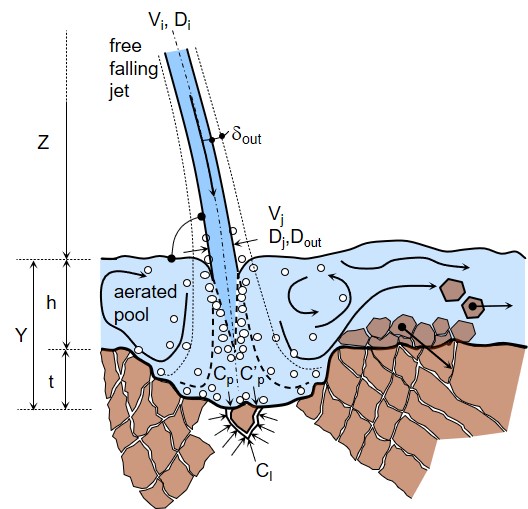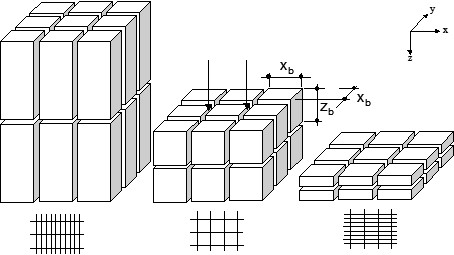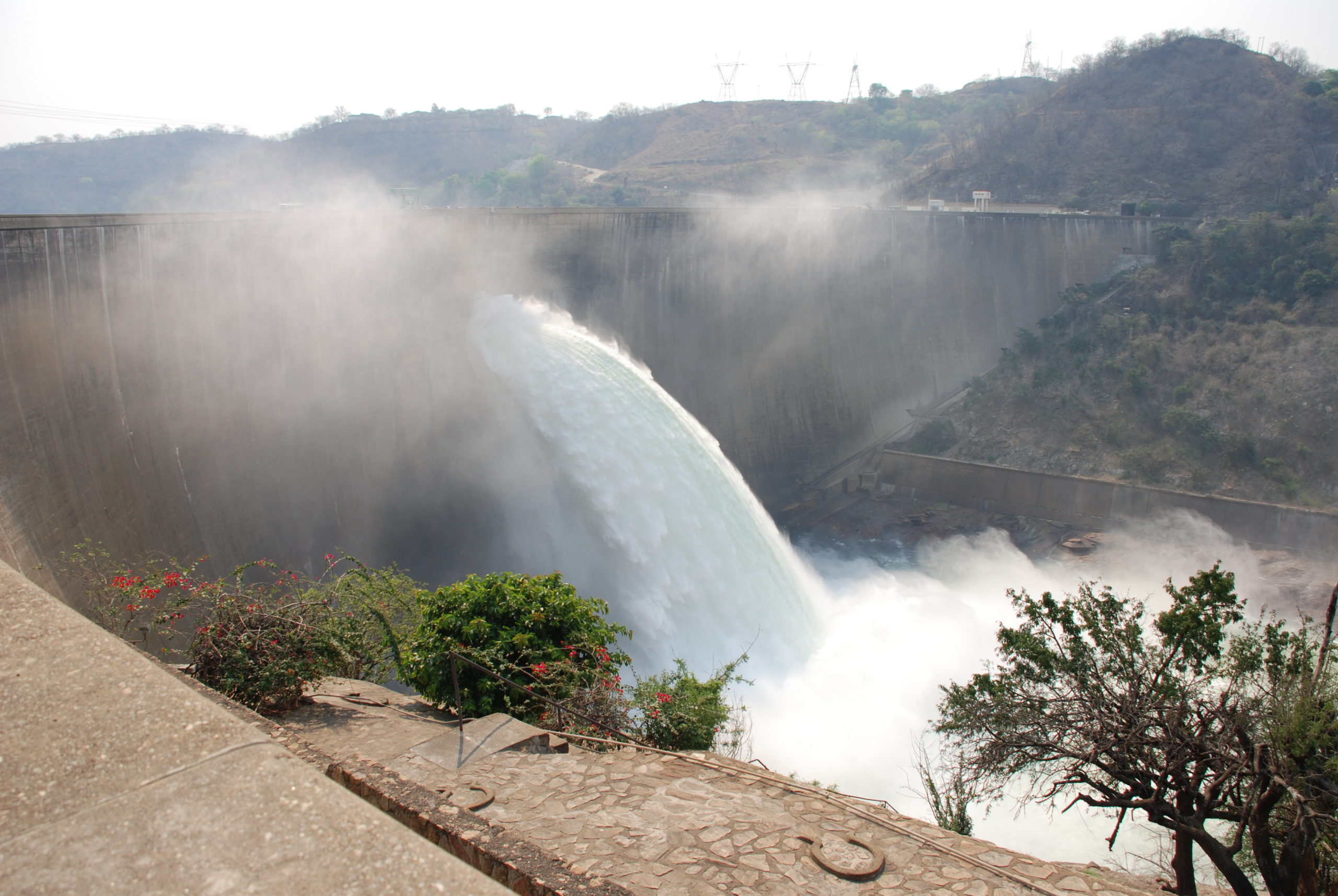
Background
The Dynamic Impulsion method (DI) has been initially developed by Bollaert during his PhD at the Swiss Federal Institute of Technology in Lausanne (1998-2002) (Bollaert, 2002; Bollaert & Schleiss, 2005; Bollaert, 2006). The method determines the potential for ejection of a rock block from its surrounding mass, due to a sudden net uplift pressure pulsation.
The method is valid in the turbulent diffusive shear layer of turbulent jets impacting onto a plunge pool and is based on a series of near-prototype scaled laboratory experiments for a compact circular jet vertically impinging onto a 2D rock block, for which net uplift pressures and impulsions have been recorded. The net uplift impulsion is defined based on an impulsion coefficient CI, which depends on the time duration of the pulsation and on the pool depth to jet diameter ratio Y/Dj. This impulsion is finally transformed by the method into a net rock block uplift height, depending on the shape and the density of the block.
The numerically applied block stability criterion makes use of a user-definable critical block uplift height that is expressed as a function of the total rock block height.
Features
The DI method proposes the following main features:
- automatic determination of the impulsion coefficient as a function of the rock joint characteristics and the 2D jet diffusion through the plunge pool.
- implementation of the shape and the density of the rock blocks, for each rock mass layer
- user-definable shear forces in the rock joints
- user-definable time duration of net uplift impulsion
- user-definable critical block uplift height


Aeras of application
The DI method is applicable to the following types of turbulent flow impacting the water-rock interface:
- circular-shaped and rectangular-shaped jets and nappe flows
- vertically and obliquely impinging jets
The DI method is less applicable in the following particular situations:
- highly broken-up jets
- areas along the water-rock interface that are situated far away from the turbulent shear layer of the impinging jet
